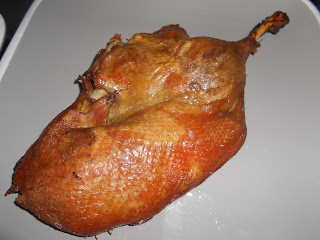Fav new food I
tried this month|:
A whoopsed from
Lidl –
Italien Gorgonzola Dop
Gorgonzola is made exclusively with milk from cows raised in Piedmont
and Lombardy.
Gorgonzola dates
back to the Roman age when in the fall the herds of cows would make their way
down from the Alps to the valleys of the Po River. They would arrive in the fields
near the city of Gorgonzola from the valleys of Bergamo, where they would feed
on fresh grass, called quartirola.
It is said that
Gorgonzola cheese was created due to the overwhelming number of cows in the
area. People near Gorgonzola had to begin making cheese in order to conserve
all the milk. However, legend has it that Gorgonzola, which can be traced back
to the XV century, was the fruit of a romantic escapade of a cow-herder who,
having abandoned his evening’s work midway to spend time in his lover’s arms,
added the morning’s curd to that of the previous night creating a cheese that
remains soft even when aged. The cheese was punctured with sticks to allow it
to dry out. The air channels created space for mould to grow in the cheese,
giving it its signature look and flavour.
The city of Gorgonzola remains the centre of Gorgonzola cheese production due the availability of milk and the cheese-makers ability to turn what might seem like a defect into a specialty. By law and by tradition, Gorgonzola is made exclusively with milk from cows raised in Piedmont and Lombardy, Since 1996, Gorgonzola has benefited from the Denomination of Protected Origin (DOP) certification.
Gorgonzola is made
by heating the milk to 82°-93°F, adding milk enzymes, mould (penicillum)
and rennet. After the curd is broken, the cheese mass is left to rest and then
lifted out with hemp cloth and left to drip-dry for 12 hours. The cheese is
ripened for 5 to 6 days and turned daily. It is salted by hand every other day
for 3 weeks. Copper or steel rods are inserted into both the top and bottom of
the cheese over the course of 4 to 5 days, allowing for mould to develop. The
cheese is then aged for 20 to 30 days in a room with 80% humidity and 43°-50°F.
At the end of this process, the cheese will have developed its characteristic
blue-marbled colour and sweet, yet slightly spicy, flavour.
I am not
usually a fan of ‘mould’ cheese but Gorgonzola
was less pungent than most. However I only used a slither on my Scallops, chorizo with white kidney beans. (Click
on the link if you would like the recipe.
,
,
,
,
.
.
.
.
My quick snacks blog –
Latest recipe this month
Sundried tomato /olive focaccia with roasted veg
.
.
.
My quick snacks blog –
My most viewed September recipe
Tomato Jasmine Rice with Kale Crisps topping
September recipes –
Kale Crisps
August recipes –
Banana Fudge Muffins
Banana Tofu Mousse
Spelt Dahl
Brunch bake
Korean BBQ tofu and duck breast
Baked Sweet Potato Rosti
Baked Gammon n veg medley
Popular recipes:
Pulled pork salad with goat's cheese dressing
Lamb stir fry with home-made Teriyaki sauce
Crispy half duck with hoisin sauce
Jasmine chorizo fried rice
King prawn sweet potato rogan josh
5 ways to serve fish
Italien Gorgonzola Dop used in my Scallops, chorizo with white kidney beans recipe.
Scallops, chorizo with white kidney beans
Pork and chorizo bake
Breaded white fish with simple cabbage rosti
Steamed sweet potato and dill crab cakes
Roasted veg pasta bows
Savoury Polenta Bake
Mackerel Fillet Layer
Lemon& Rosemary Fried Brown Rice
Quorn Jasmine Rice What is quorn?
Chilli quorn stir fry
My latest pudding recipes No butter chocolate pudding
Lemon drizzle muffins
Giant lemon pancake n Maple Syrup Dessert
If you want to know more about tofu check out
Check out my recipe Mushroom Tofu
and
another of my recipes
Tofu in pulses
Check out my recipe Mushroom Tofu
and
another of my recipes
Tofu in pulses
Tofu n sweet potato lasagne
vitamins and minerals (a guide)
omega 3 (a guide)
Click on the link for more info on -.































